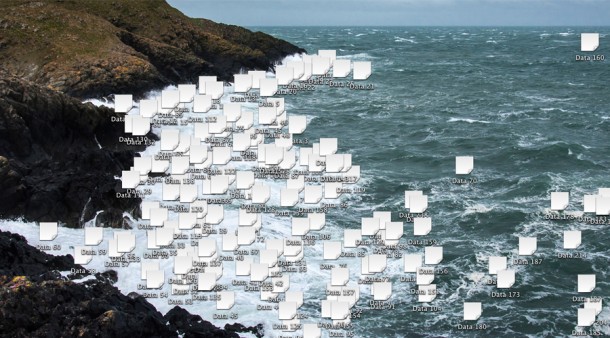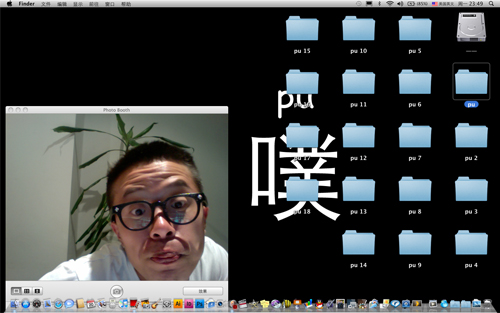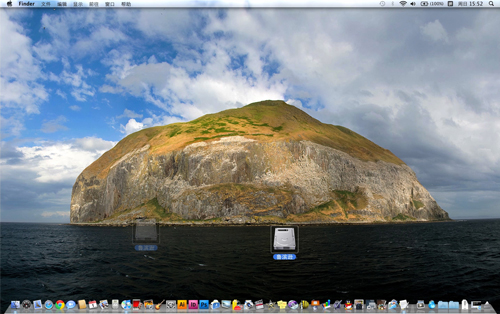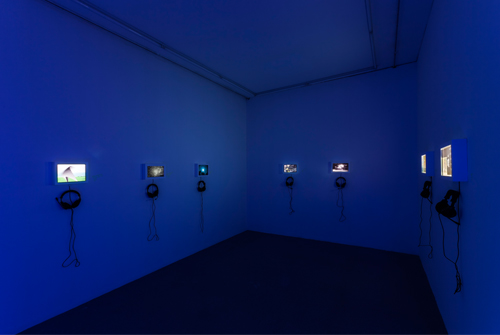LIN KE: WHEN NEW MEDIA BECOMES OLD
| November 9, 2014 | Post In LEAP 29

LIN KE’S STUDIO is his 2008 MacBook Pro, preloaded with the Mac OS X 10.6.8 operating system and standard software including the Safari web browser, Preview image viewer, and QuickTime 7.0 Pro for video, along with the addition of image editing software Photoshop CS4 and Screenium for screencasting. This is his working environment; the internet provides an endless supply of material. The notebook was the first generation “panda” machine produced by Apple, so nicknamed for its metal case with a black frame around the screen and black keys (now the standard design), which replaced the previous all-white “baby white” model. However you look at it, the 2008 version is already getting old, and Lin’s machine has recently begun to develop problems, the unexpected effects of which have given him new inspiration.
In 2008, Lin Ke had just graduated from the New Media department of the China Academy of Art. Students with good specialist technical skills were recruited into the department’s studio to work on projects for the Shanghai eArts festival and the 2010 World Expo. Though adept with many mainstream software programs, Lin is no geek. In his own work he does not use software as a technical means to achieve particular intended effects, but rather sets each function free from its original purpose in the way that language is liberated from its communicative functions to become poetic. If poetry expresses the joy of language, Lin Ke’s work brings out the pleasure of the graphical user interface. He does not care how the programs work or what they were designed for; he is intent only on making the interface fun and visually compelling.

Lin Ke views virtual spaces with a natural eye, making them appear like a false reality. In The Folder in Dusk (2010) he turns tabs orange and sets as the background an image of a beach scene at evening, making the tabs look like shafts of sunlight. In The Wind of Virtual Memory, he uses the path deform tool in Photoshop to drag a graphic diagram back and forth, creating the effect of a sail billowing in the wind; in Waves the magic wand tool creates a flashing effect at the edge of a selected area, appearing as sunlight reflected on the surface of moving water; Traditional Romance (2012) uses the RGB curve in Photoshop to continually alter the image of a screening room as though the image on the screen itself were constantly shifting. The most typical of this group of works is Star Travel (2013), in which a polygon drawing tool maps a constellation onto an image of the night sky; at the moment when the shape is closed it flickers as if a door to space is opening, and then the whole of the selected area slowly moves, beginning a countdown to a great leap through time and space. This series, based on the functions of the Photoshop interface, imbues digital space with a human vitality and intelligence.
The technology in Lin’s work is ordinary—anyone who uses Photoshop will be very familiar with these operations, but they are not likely to have thought to view these graphical effects themselves as artistic language. Perhaps influenced by the Small Productions collective in Hangzhou, Lin’s technical threshold has always been low. His “Folder” series presents one such example: only basic knowledge of how to use a computer is necessary, just slightly more complex than breathing—and who would make art out of breathing? To a great extent, Lin’s art comes from discovering, imagining, and recreating elements of the computer interface that people go without noticing: in his imagination, the pop-up dialogue box warning user of a duplicate file name becomes a greeting: Folders Meet and Say Hello. Works like The Universe Folder and Egg Makes Chicken Makes Egg are laid out using the nesting structure of folders and shortcuts. To turn basic computing operations that come as naturally as eating, sleeping, or breathing into an interesting game requires sensitivity to what they can signify, as well as a need for fun and, most importantly, complete immersion in the digital world.

This is not a discussion of cutting-edge technologies or brain- computer interfaces. The constant development of media to extend human capability has long been a part of our nature. Like the writing brush for the Chinese scholar of old or the harpsichord for Bach, networked computers and screen interfaces are integral to Lin Ke’s generation, bearing not only a consciousness but also a body. Works like Plants Massage the Eyes of the People, pu, and the recently completed Lightning demonstrate that Lin is not an external controller but rather an internal participant in this world who does not distinguish between outside and inside—the artist behind the screen controlling the computer is the same person who appears live on his webcam.
In reality, Lin Ke is not at all interested in the theoretical problems of technical media, because he is not trying to stand outside the medium or view it from a critical perspective. In contemporary Chinese art, awareness of media criticism was built up by his teachers, like Zhang Peili and Geng Jianyi, but in his ideas about new media Lin goes against the prevailing view by instinctively throwing himself into the beautiful new world of media, critical or reflective distance thrown to the wind. As a result, his work marks a significant departure from the calm, restrained aesthetic of the previous generation of new media artists, turning from a rigid understanding of technical possibilities to a hedonistic use of soft technology. Lin certainly indulges his rebellious behavior to some degree (he is also a member of Shuangfei Art Center), as if to emphasize his rough, low-tech aesthetic with an alternately light touch and deliberate exaggeration.

The concept of new media art in China dates institutionally to 2001, when the China Academy of Art New Media Center in Hangzhou and the Loft New Media Art Center in Beijing were founded. In 2003, the New Media Center was elevated to the status of an academic department and started to accept students; Lin Ke was in the second class, which enrolled in 2004. Ten years on, new media is like a piece of worn in clothing—familiar, comfortable, and relaxing when wearing it. Lin Ke has implicitly followed this trend, but he has also taken his own road.

